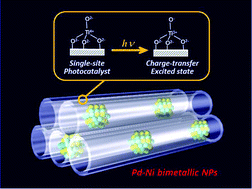Enhanced hydrogenation activity of nano-sized Pd–Ni bimetal particles on Ti-containing mesoporous silica prepared by a photo-assisted deposition method
Abstract
A facile photo-assisted deposition (PAD) for the synthesis of highly dispersed and small Pd–Ni bimetal


 Please wait while we load your content...
Please wait while we load your content...